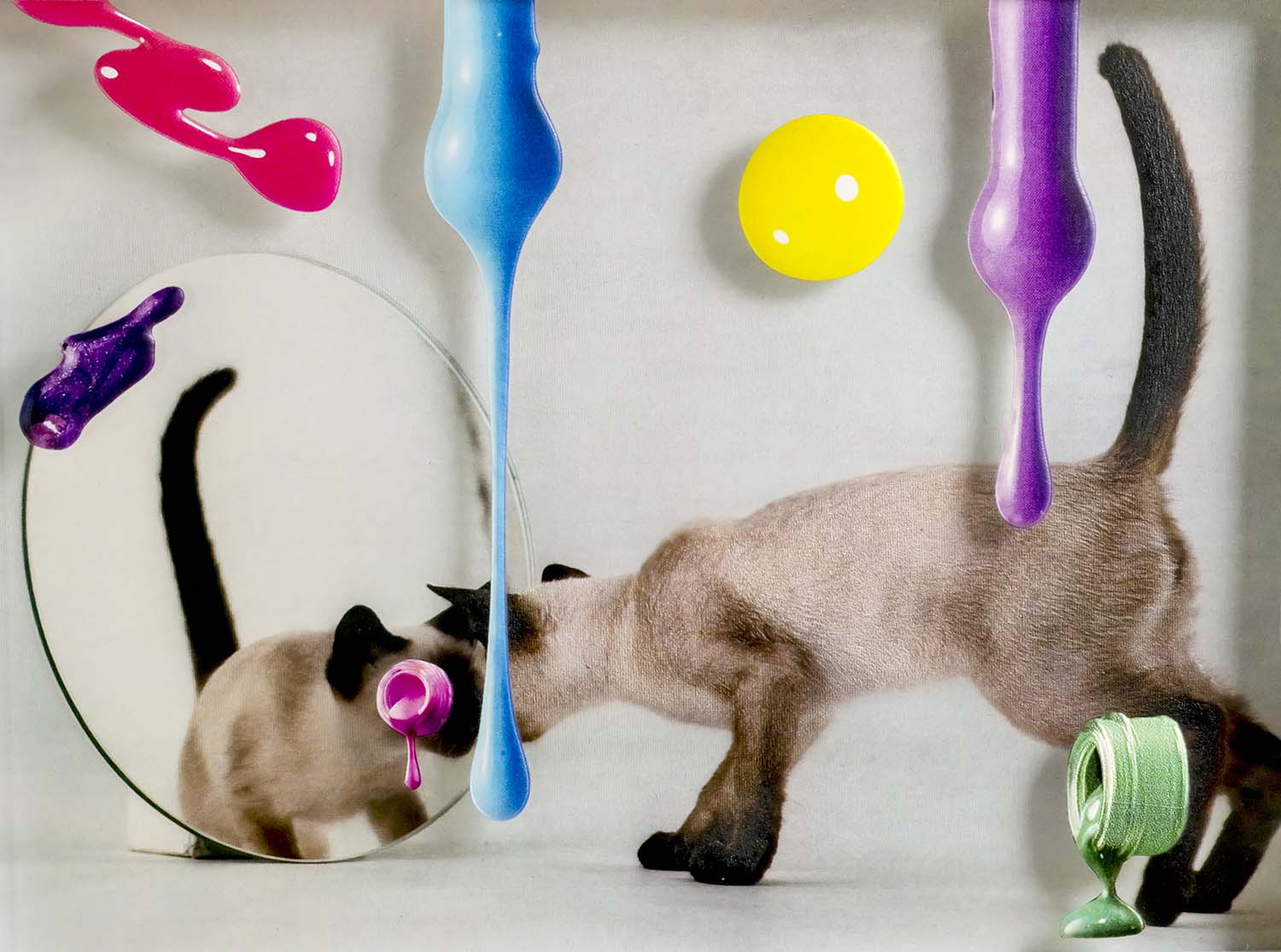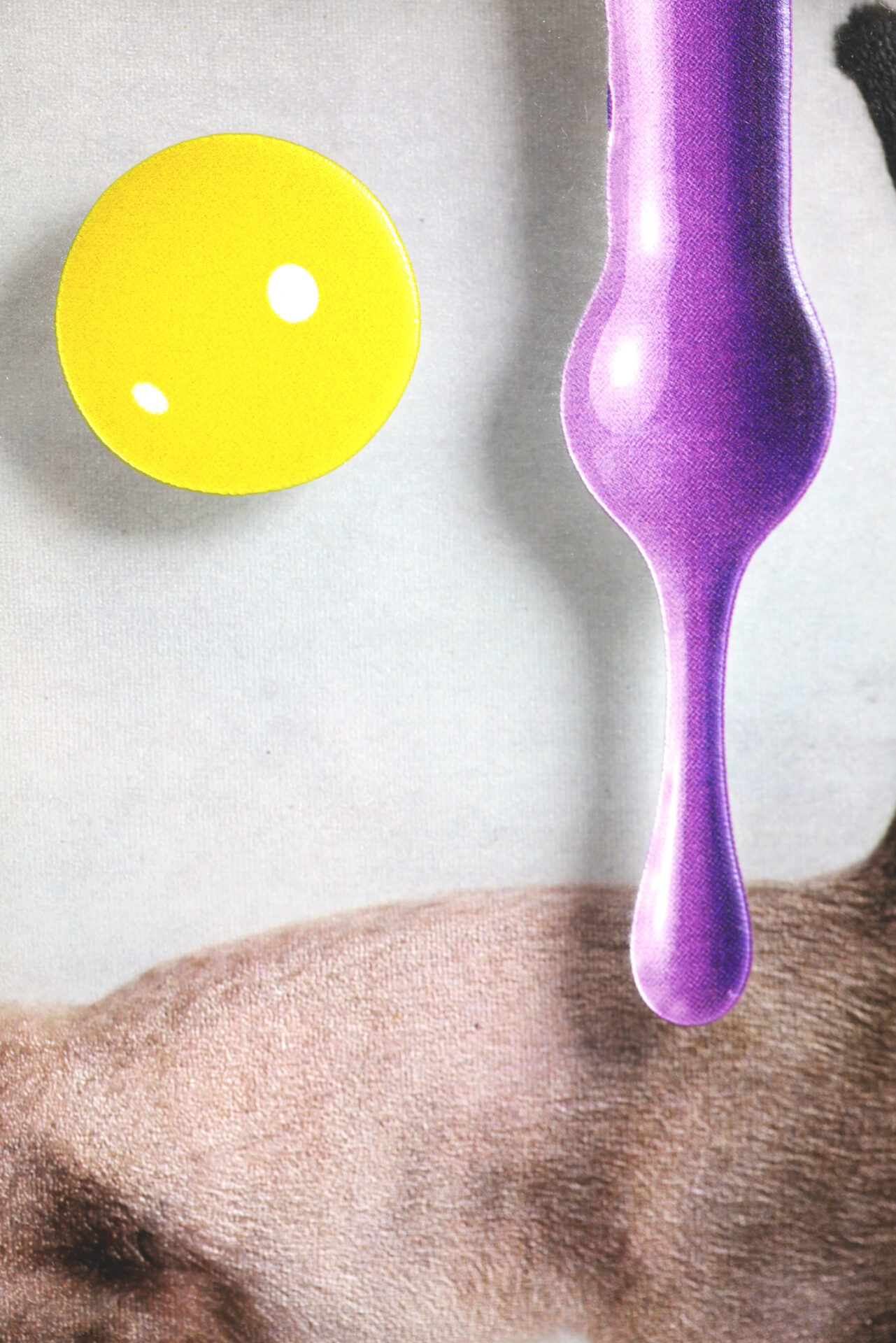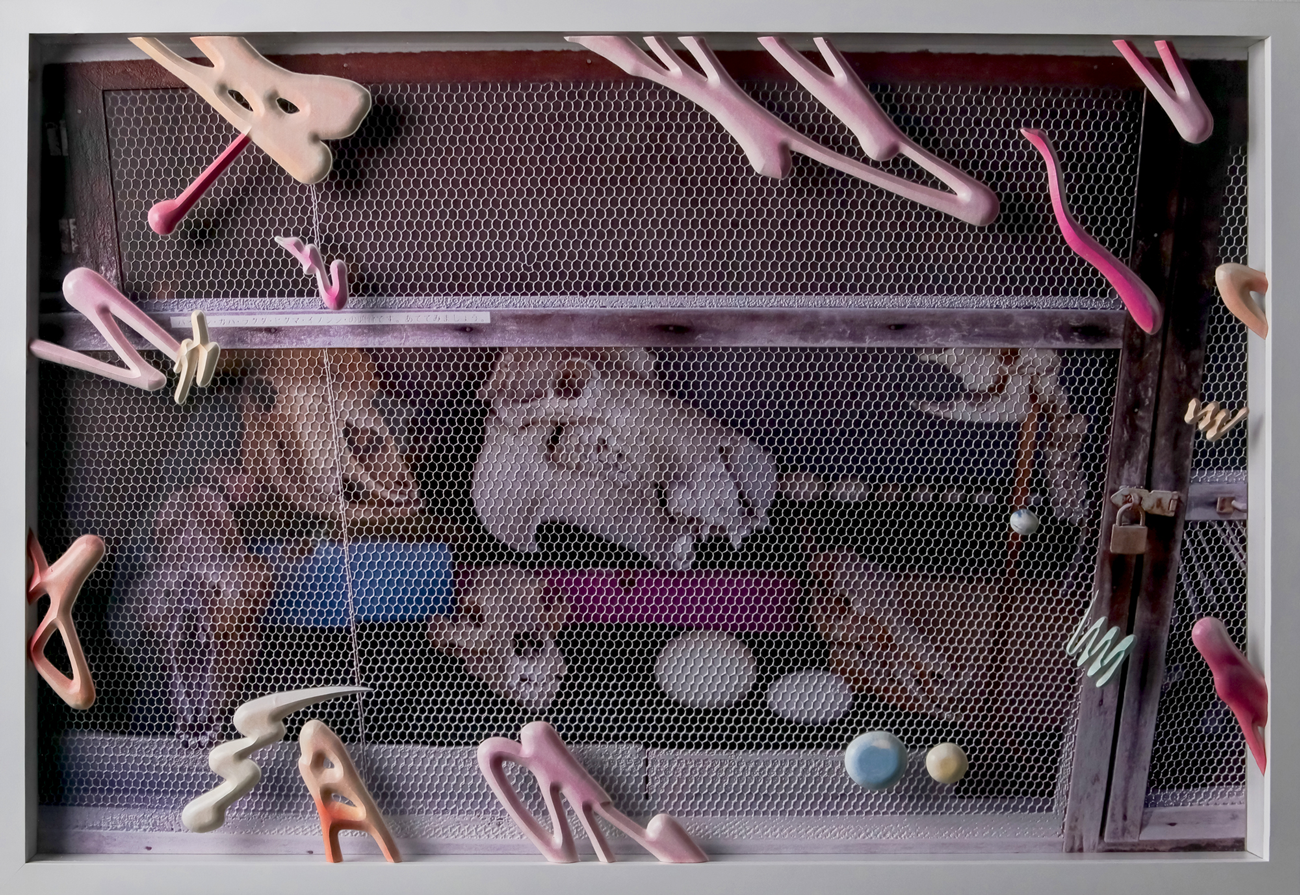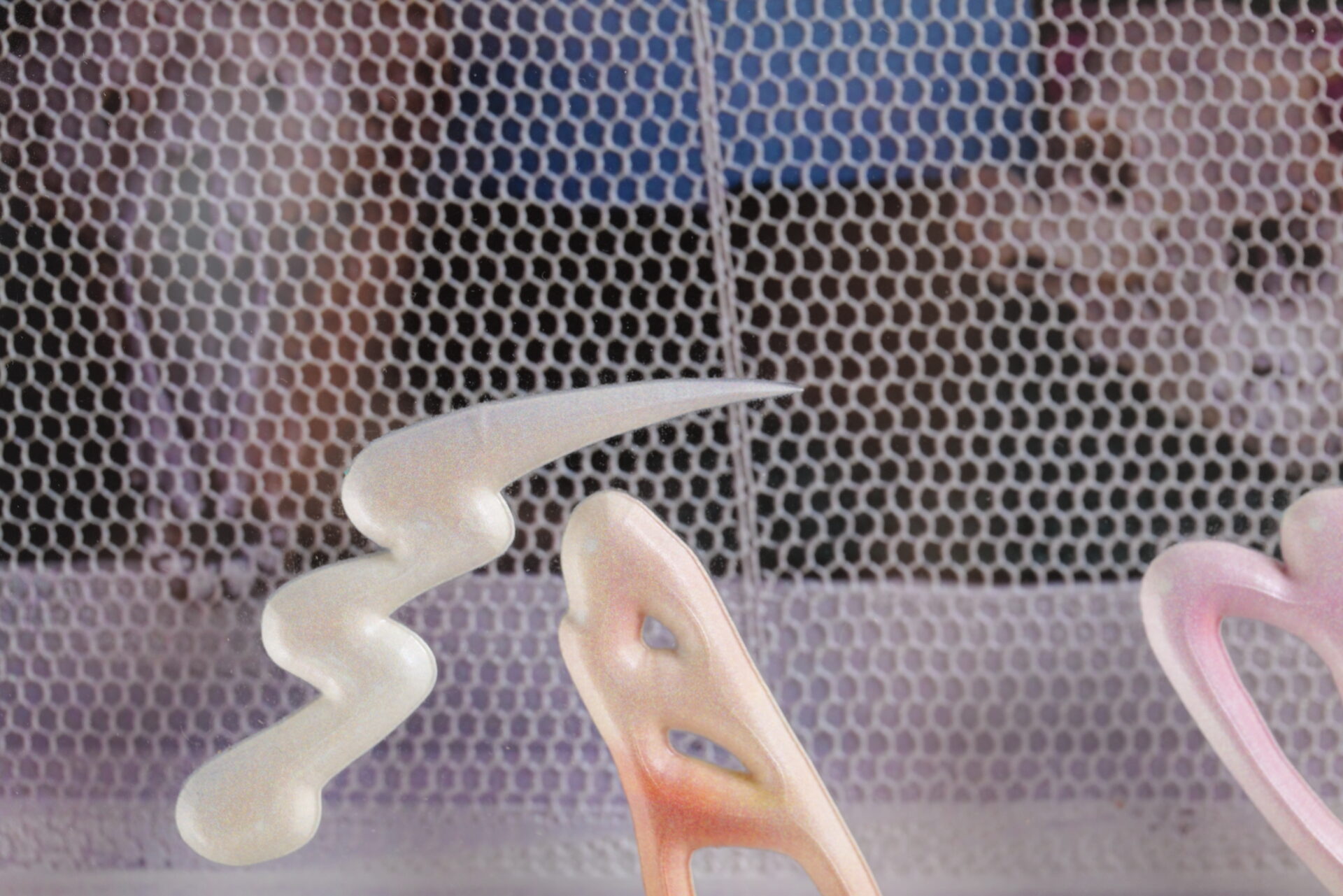tower (WOODEN BOX)
2021, UV Inkjet Print (StareReap 2.5 Print) on wooden plywood, 79.5 × 40 × 40 cm
I came to understand that what makes StareReap unique is its ability to recreate the granular gradations found in planar artwork, creating images as a seamless extension of these primary surfaces inherently imbued with the materiality of paint, ink, and paper as physical objects. Another distinction is how StareReap can be used to generate texture from truly flat, 2D sources. Whether photographic prints, digital images, advertisements, magazines, or other printed matter, StareReap can decipher images to “read” textures and even render fictive gradations where they did not originally exist. You could say that StareReap is almost an inverse of the sculptural relief techniques of antiquity, which sought to imprint work with the vestigial marks of space and circumstance. In this sense, perhaps StareReap is a new mode of relief for the modern age. From the perspective of ink weatherability, I think the technology might also allow us to toy with timelines. By making casts of artworks in certain mediums—such as drawings executed in color marker or collages of printed material—we could reframe their temporal scale. My collage work places an emphasis on the interpolations of disparate contexts, values, and timelines, along with the accretion of transitory moments and a sense of speed. As such, I’ve also deliberately sought to incorporate serendipitous drips of resin and plaster, particles of plaster powder, coffee stains, and runaway smears of my water-based pens, together with found printed material and readymade objects. I feel that all elements are in a constant state of fluid flux, so am perturbed by the common conception that time crystallizes when a piece of art is deemed complete. I believe that the variables surrounding a work’s formation change depending on the scope of its timescale. ―Teppei Kaneuji
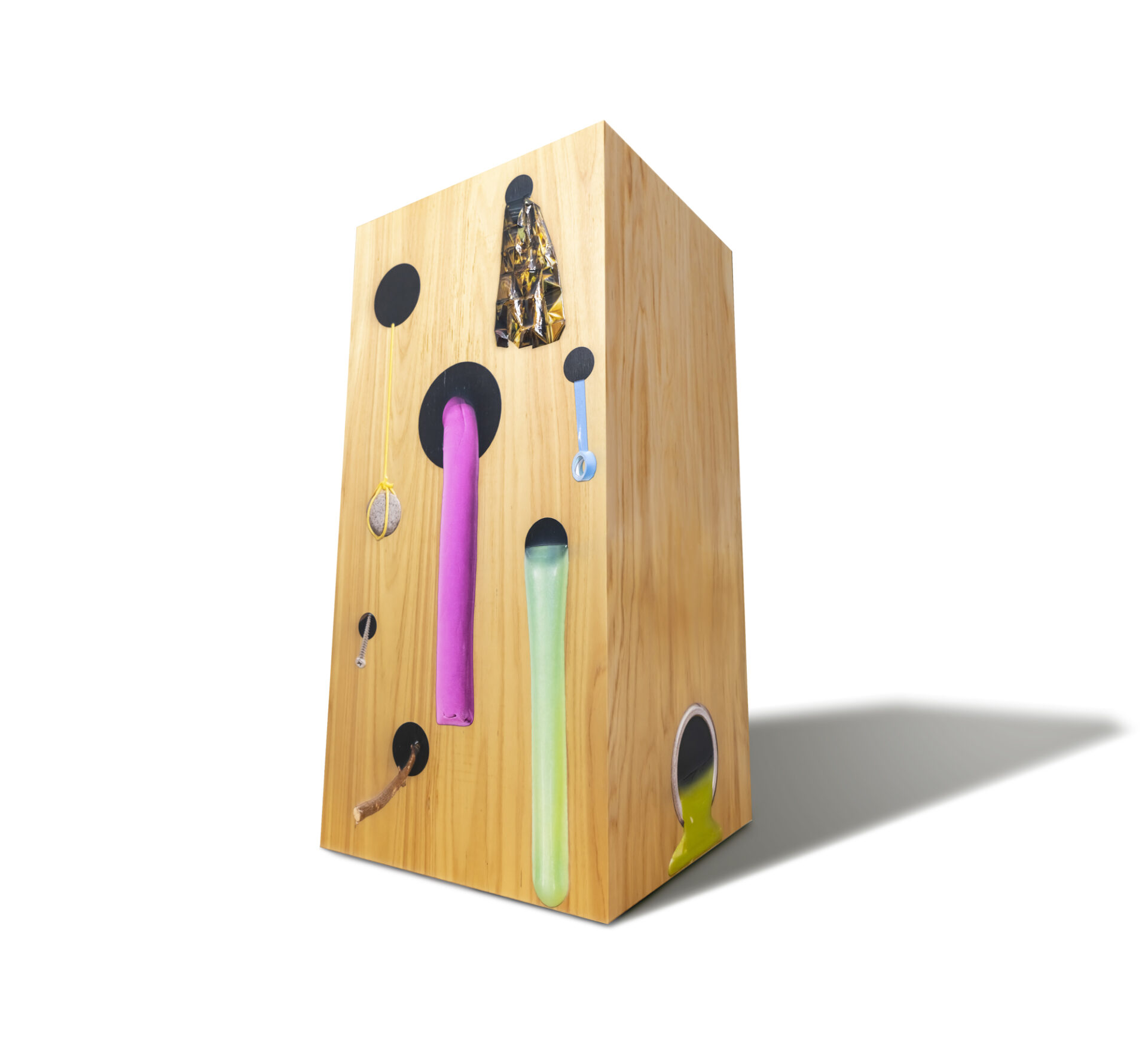
tower (WOODEN BOX)
2021, UV Inkjet Print (StareReap 2.5 Print) on wooden plywood, 79.5 × 40 × 40 cm
I came to understand that what makes StareReap unique is its ability to recreate the granular gradations found in planar artwork, creating images as a seamless extension of these primary surfaces inherently imbued with the materiality of paint, ink, and paper as physical objects. Another distinction is how StareReap can be used to generate texture from truly flat, 2D sources. Whether photographic prints, digital images, advertisements, magazines, or other printed matter, StareReap can decipher images to “read” textures and even render fictive gradations where they did not originally exist. You could say that StareReap is almost an inverse of the sculptural relief techniques of antiquity, which sought to imprint work with the vestigial marks of space and circumstance. In this sense, perhaps StareReap is a new mode of relief for the modern age. From the perspective of ink weatherability, I think the technology might also allow us to toy with timelines. By making casts of artworks in certain mediums—such as drawings executed in color marker or collages of printed material—we could reframe their temporal scale. My collage work places an emphasis on the interpolations of disparate contexts, values, and timelines, along with the accretion of transitory moments and a sense of speed. As such, I’ve also deliberately sought to incorporate serendipitous drips of resin and plaster, particles of plaster powder, coffee stains, and runaway smears of my water-based pens, together with found printed material and readymade objects. I feel that all elements are in a constant state of fluid flux, so am perturbed by the common conception that time crystallizes when a piece of art is deemed complete. I believe that the variables surrounding a work’s formation change depending on the scope of its timescale. ―Teppei Kaneuji
WORKS
ARTIST PROFILE

Teppei KANEUJI
Born in 1978 in Kyoto. In 2003, he completed a graduate degree in sculpture at Kyoto City University of Arts, where he currently holds the position of Associate Professor. He is known for his three-dimensional pieces and installation work using everyday items in collage. Since 2011 he has embarked on work on stage sets and theater production. His major exhibitions include ‘Teppei Kaneuji: Melting City/Empty Forest’ (Yokohama Museum of Art, 2009), ‘Towering Something’ (Ullens Centre for Contemporary Art, Beijing, 2013), ‘ZONES’ (Marugame Genichiro-Inokuma Museum of Contemporary Art (MIMOCA), 2016), and many others. His work is collected in various domestic and international museums such as the Yokohama Museum of Art, the Mori Art Museum, and the MOT.

